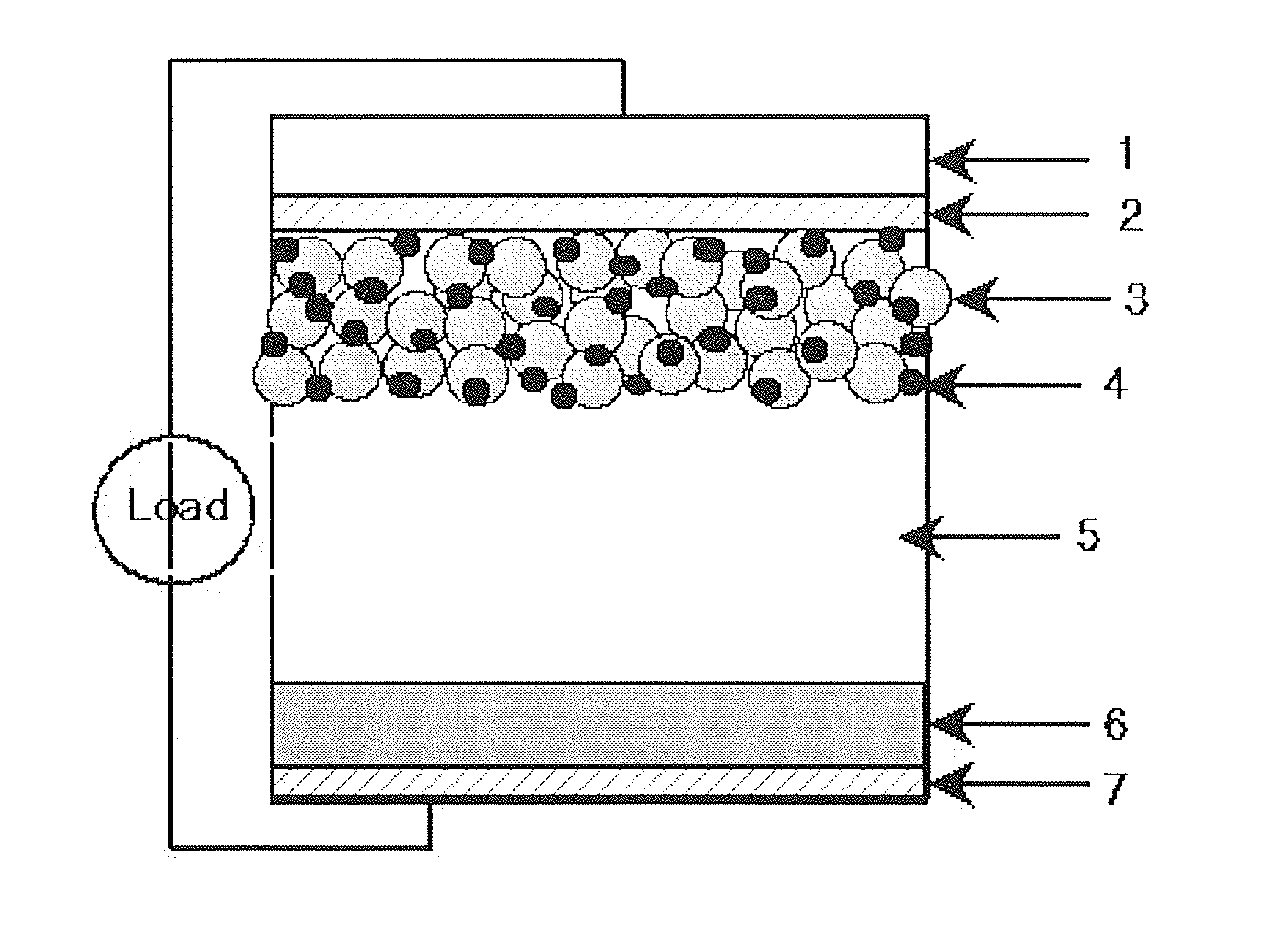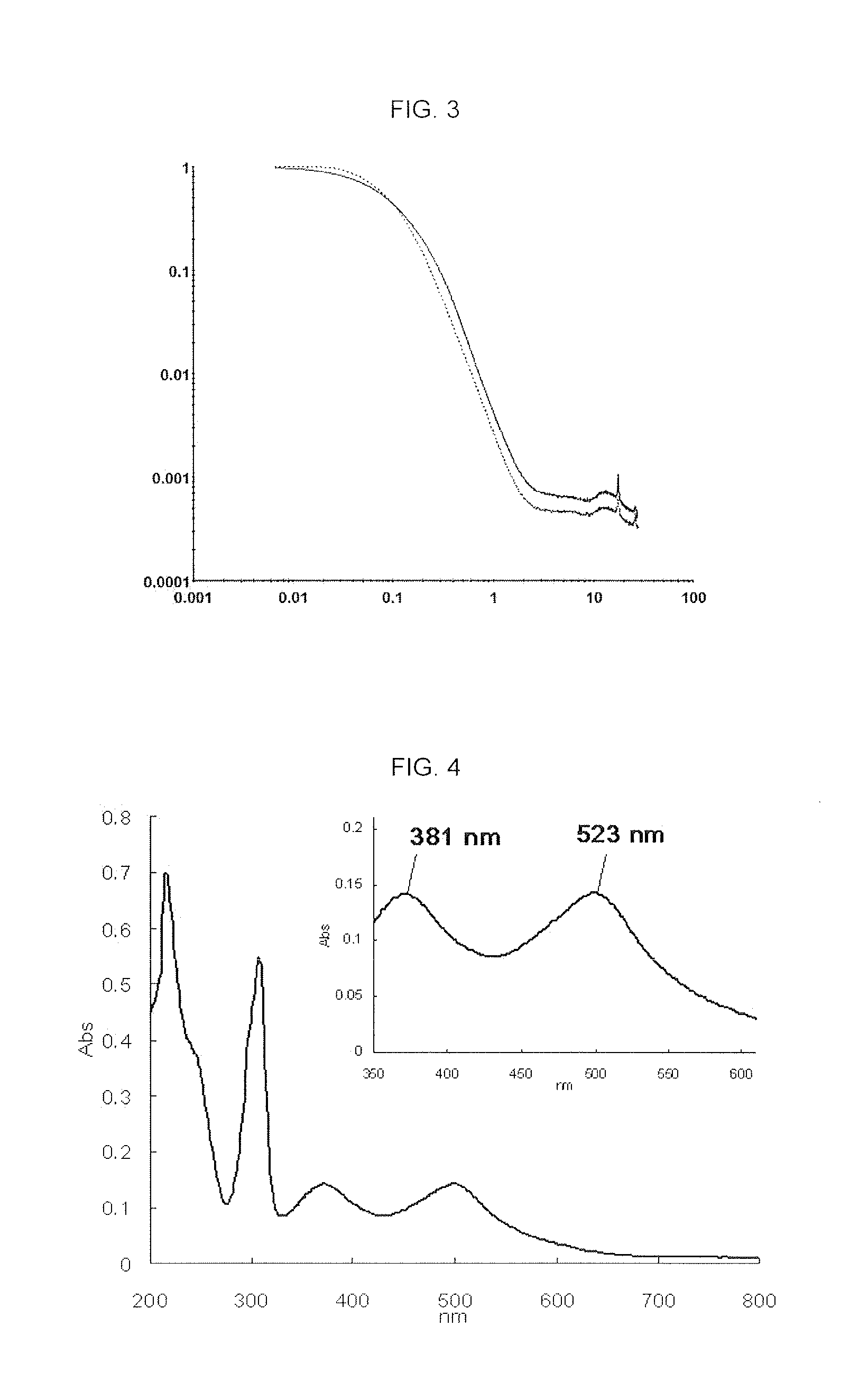Titanium dioxide nanoparticles for fabricating photo-electrode for efficient, longlasting dye-sensitized solar cell and fabrication method thereof
- Summary
- Abstract
- Description
- Claims
- Application Information
AI Technical Summary
Benefits of technology
Problems solved by technology
Method used
Image
Examples
example 1
[0072]Titania nanoparticles were fabricated at 1000° C. from titanium tetraisopropoxide as a precursor through a chemical vapor condensation. Oxygen gas was used as an oxidizing gas and nitrogen gas was used as a carrier gas. The fabricated titania nanoparticle had a specific surface area of 115 to 120 m2 / g, determined as a crystal form of pure anatase phase, and an round shape (See (a) of FIG. 2). The fabricated titania nanoparticles were post-annealed at 450° C. for 5 hours in the air to form titania nanoparticles named as KIST-5, their specific surface area was reduced and their shape was changed to a faceted form (See (b) of FIG. 2 and Table 1).
example 2
[0073]The adsorption behavior of dye molecules on the titania nanoparticle with post-annealed treatment in Example 1 was determined.
[0074]It was prepared a dye solution containing 3.0 mM of N719 dye molecules in ethanol solvent and P25 was adapted as a titania nanoparticle for a comparative example.
[0075]1 g of the KIST-5 with post-annealing treatment at 450° C. for five hours and 1 g of the P25 were dispersed in 1 L of the dye solution, respectively, and concentrations of the dye molecules in the supernatant dye solution were measured for determining an absorption rate of dye molecules.
[0076]For determining an adsorption rate of dye molecules, 1 mL of mixture solutions, which are the dye solutions containing the respective titania nanoparticles, were taken in predetermined time with some interval, respectively. And the titania nanoparticles adsorbing dye molecules are removed from the mixture solutions with centrifugal separation. The adsorption rates of the dye molecules were dete...
example 3
[0078]The decomposition behavior of N719 dye molecules adsorbed on the KIST-5 titania nanoparticles annealed at 450° C. for 5 hours demonstrated in Example 1 was determined. P25 (titania nanoparticles) adsorbing N719 dye molecules was used as a comparative example,
[0079]0.8 g of the KIST-5 and P25 were taken, dispersed in 5 mL methanol, and then dispersed in the Petri dish of 9 cm ID, respectively.
[0080]Methanol in the petri dishes was completely evaporated at 50° C. and the remaining titania nanoparticles in each dishes were dried in the oven at 60° C. In the each petri dish, there was a membrane having light pink color.
[0081]The petri dishes including the membrane were cooled to room temperature and were put at a position of 15 cm under the metal-halogen lamp in the air for 17 hours. The temperature around the petri dishes was over 35 to 40° C. due to radiant heat.
[0082]The membrane was scraped off from the dishes to get samples from the KIST-5 and the P25. UV-Vis absorption spect...
PUM
 Login to View More
Login to View More Abstract
Description
Claims
Application Information
 Login to View More
Login to View More - R&D
- Intellectual Property
- Life Sciences
- Materials
- Tech Scout
- Unparalleled Data Quality
- Higher Quality Content
- 60% Fewer Hallucinations
Browse by: Latest US Patents, China's latest patents, Technical Efficacy Thesaurus, Application Domain, Technology Topic, Popular Technical Reports.
© 2025 PatSnap. All rights reserved.Legal|Privacy policy|Modern Slavery Act Transparency Statement|Sitemap|About US| Contact US: help@patsnap.com



